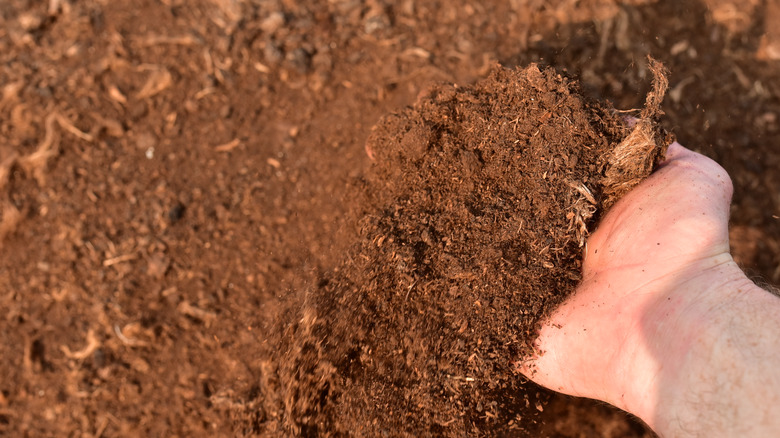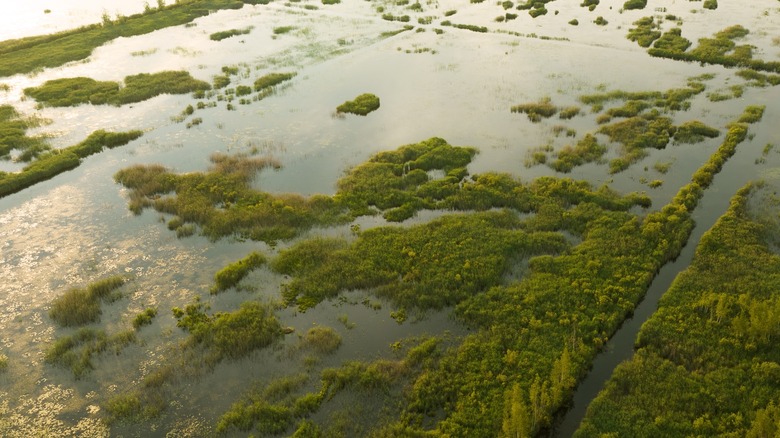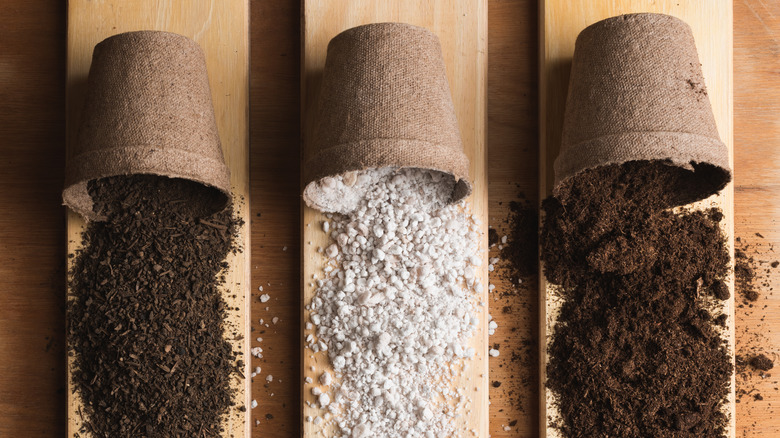Why You Shouldn't Use Peat Moss In Your Garden
Peat moss has been a sensitive topic within the gardening community for years. It's a substrate used in almost every type of bagged soil you can find in garden centers worldwide, but there are some controversial conversations around its harvesting methods. Peat moss is decayed sphagnum moss, and most of the supply in the United States is sourced from bogs in Canada, according to Bay Hay & Feed. It has a fantastic ability to keep a potted plant moist while also keeping the moisture off the roots and causing root rot. These forgiving attributes mean this substrate eases the worries of most plant lovers and protects them from the dangers of over or underwatering their plant and killing it.
Peat moss is especially useful as seed starting material since seeds and seedlings need extra moisture to germinate and grow for those first few weeks. It's essentially inert, so it doesn't introduce anything nasty into the soil that might kill seedlings. Actually, peat moss prevents dangerous mold from growing and gives seedlings the protection they need while they get their start. With all of these benefits, how could there possibly be a reason not to use it?
Why peat moss shouldn't be used
Simply put, peat moss production is not sustainable, and some might argue that it's not ethical. The bogs that peat moss is harvested from are what scientists call "carbon banks," and these bogs hold 10% of all the fixed carbon (via Bay Hay & Feed). Bogs contain more carbon than trees and are an excellent way for the earth to control the carbon within the air. When harvested, the carbon is released and adds to the dangerous levels of greenhouse gasses that are responsible for climate change.
Additionally, while harvesting the peat moss, the healthy sphagnum moss on top must be disturbed, which endangers the other living plants, animals, and insects that use these bogs as their home. It takes centuries for sphagnum moss to grow and even longer for it to decompose fully, so while technically peat moss is a renewable resource, it would take thousands of years to grow back what companies are taking every year.
What to use instead of peat moss
So what can we use instead of peat moss? As we discussed earlier, peat moss is a fantastic additive to soils for many reasons, and finding an alternative is proving to be challenging. The Washington Post suggests using coconut noir, finely shredded pine bark, or compost instead of peat moss. Unfortunately, there is a learning curve with these alternatives, and they won't behave in the same way peat moss does. The best part of peat moss is its ability to give gardeners a buffer. A gardener could safely overwater or underwater, and the peat moss would protect the plant from too much damage. Without peat moss, it's probably wise to invest in a moisture meter to determine if your plants need water.
In The New York Times, Margaret Roach expresses the frustration of finding a new alternative to such a tried and true gardening staple. Margaret asked Dr. Brian E. Jackson for help on her search, but he admitted that gardeners would likely have to accept that a substitute doesn't exist, and we'll simply have to find new ways to achieve what we need. While there are very few alternatives that work just as well as peat moss, the questionable sustainability of peat moss means it's worth working a little harder to avoid using it in your gardening.


